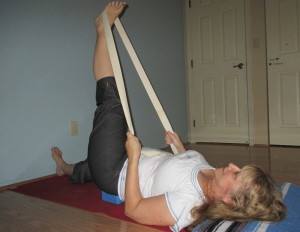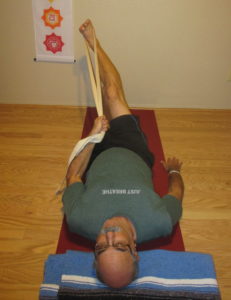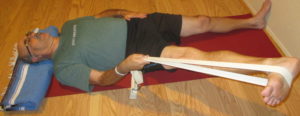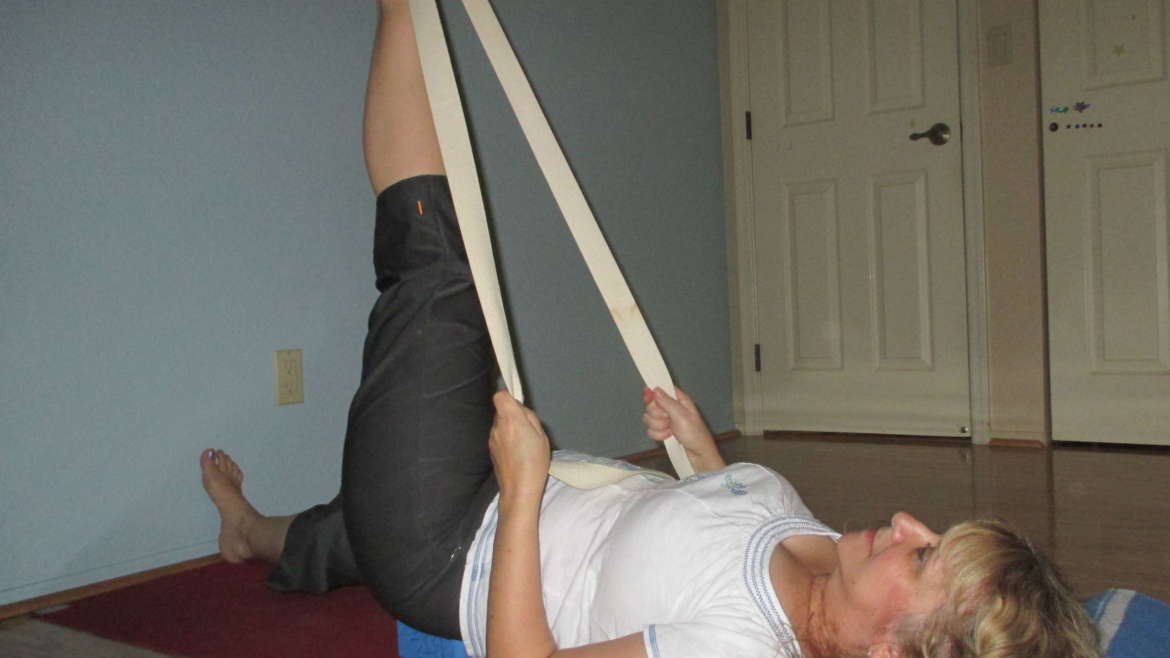Repetitive Hip Movement
Donna, an avid cyclist and golfer, maintains excellent cardiovascular conditioning. However, after our first yoga workshop, she quietly shared her concerns about tightness she was feeling in her hip joints and her gluteal muscles.
I asked Donna if she had been warming up and stretching before or after her sports activities, and like many athletes eager to get moving, she was performing only a few simple and perfunctory upper body twists.
I then gently and half-kiddingly asked her if she cycles and peddles backwards. She laughed at the obvious answer: “Not at all”. I then asked her if she walks sideways when she plays golf.
I could almost see the light bulb in her brain switch on.
Strength and Flexibility in Hip Balance
All of Donna’s athletic endeavors focus on forward movement of the hips and legs. Her habits of daily living, like many of us, consist mainly of walking forward or simply sitting. Habitual moment in only one or two directions of any joint is to the detriment of the development of her full motion for her body. Furthermore range and BALANCE of strength and flexibility becomes limited in these areas.
Motion is our lotion, and the joints must be moved in all of their potential directions to combat stiffness and maximize our individual flexibility.
Although hips typically are capable of movement and strength in several directions, our everyday activities and many sports favor forward movement. Donna is certainly not alone.
A Note About Hip Replacements: All of us have history in our bodies. Some of my students have hip replacements. There are many variables in terms of appropriate practices, however in general for those students with a fairly recent replacement you will need 1)input from your physician, 2) Guidance from a knowledgeable yoga instructor who knows appropriate modifications and the use of props 3)To consider how long ago the surgery took place and what kind of surgical approach you had(anterior or posterior, for example) and 4)Most important to note: if using your brain and not your ego to practice, yoga asana can be safe.
For more information about Yoga and hip replacement check this article here from the “Yoga for Healthy Aging” website.
And while you’re there, check out the article I authored as a “Yoga for Healthy Aging” teacher on Yoga and Cough Variant asthma.
Hip Directions of Movement:
Flexion and Extension. Flexion means to “close” a joint and bring the bones closer. Extension opens a joint. Check out this post for seven variations of leg stretch one.


Adduction and Abduction. Adduction means to bring a joint toward the midline, abduction move the limb away from the midline of the frontal plane of the body.
Internal and External Rotation. Internal rotation happens in the shoulders and hips only. The joint turns toward the midline. In external rotation the joint moves away from the midline.

A version of this originally appeared on YogaTuneUp.com.

